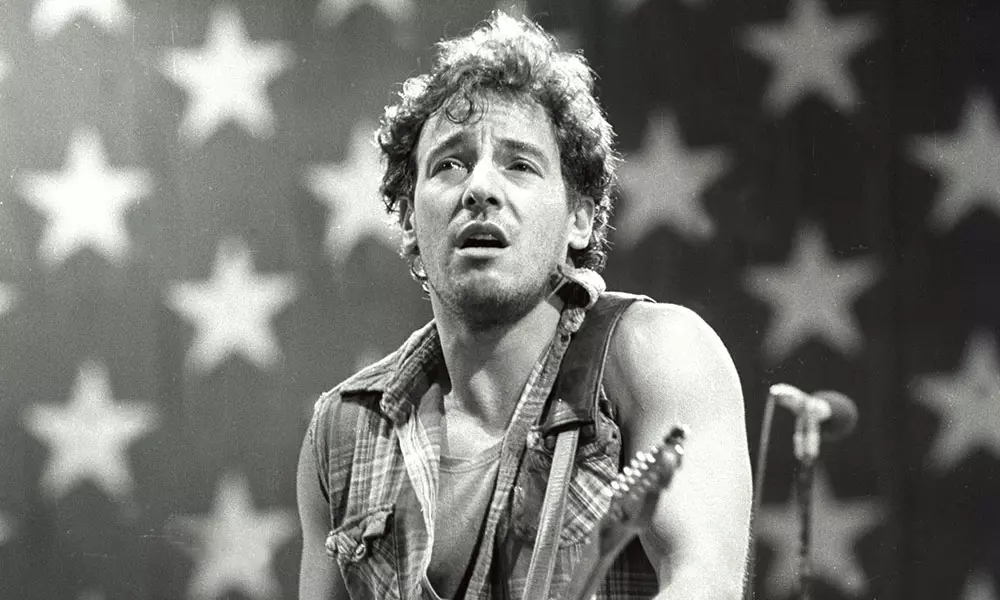Born In The U.S.A. was a huge hit upon its release in 1984, containing seven top-10 hit singles and propelling Bruce Springsteen to super-star status. Forty years later, the album still packs a punch, presenting themes of perseverance, friendship and love, as well as strong political statements scattered throughout.
With Springsteen’s Ottawa concert nearing in November, now is a great time to reflect on the album that made him the artist he is today.
The LP starts off with the booming drumming of Max Weinberg, ushering in Springsteen’s vocals as he sings about an alienated Vietnam veteran trying to fit back into society. “Born in the U.S.A.” was often mistaken as patriotic by those who heard its anthem-like chorus but not its angry message about disparaging societal inequity.
President Ronald Reagan even praised Springsteen for his “patriotism,” and he also requested to use the song in his 1984 re-election campaign. Springsteen declined and stated at a concert that he didn’t think Reagan actually listened to his music.
The title track flows into “Cover Me,” one of Springsteen’s most pop-sounding songs featuring fast-paced drumming and guitar riffs. The lead singer of the E-Street Band sings that times are tough, the world is rougher and he needs someone to come on in and cover him from the harsh realities of it all.
“Darlington County” comes next – arguably the least impressive song on the album. The song’s story is fun, as the two main characters take a Fourth of July road trip from New York City to the fictional “Darlington City” for a weekend of partying. The song is a Springsteen staple at live shows: the “sha-la-la” chorus is a good crowd sing-along. However, the song is repetitive and doesn’t offer anything unique to the album.
Thankfully, the album picks right back up with the earworm “Working on the Highway,” which offers a look into working-class hardships. The song’s protagonist is stuck in a cycle of “laying down the blacktop all day long,” and a low pay grade. The song uses a constant clapping beat and acoustic guitar to create a great, catchy rhythm. At points, Weinberg also shows off his drumming for an excellent combination of sounds.
Born in the U.S.A. hits a sombre note with “Downbound Train,” which tells the story of a man going through a divorce and unemployment as his life seemingly crumbles around him. An under-appreciated track, Springsteen flaunts his capability of making the listener feel the described emotions along with him. His baritone singing reflects the main character’s dwindling energy.
The low-key “I’m On Fire” finishes off the record’s first side, using synthesizers and a soft guitar riff. Springsteen’s hushed voice makes it one of his more intimate songs. This is apparent in the lyrics, as the main character is drawn to someone so intensely that his emotions are burning like a flame.
“No Surrender,” “Bobby Jean” and “I’m Goin’ Down” make for the best three-track run on the album. “No Surrender” melds Weinberg’s drumming alongside Springsteen and Nils Lofgren’s guitar. The song is a perseverance anthem and fan-favourite, serving as the opener for 45 out of 67 shows on Springsteen’s current world tour.
“Bobby Jean” is a beautiful song about a lost friendship. It is often thought to be a tribute to Springsteen’s band-mate, Stevie Van Zandt, who temporarily left the band for ten years between 1984 and 1995. Clarence Clemons plays a superbly melodic saxophone solo to close out the song, paired with zestful keyboarding by Roy Bittan. The song’s last lines are great finishers, as Springsteen sings that he’s calling his friend, not to change his mind about coming back, but just to say he misses him.
“I’m Goin’ Down” is from the perspective of a man who’s on the downslope of his relationship with his girlfriend. He’s disappointed about how she treats him, singing that she gets “her kicks from just knocking [him] down,” and that he’s “sick and tired” of their fighting.
Next, “Glory Days” is a bright-sounding love letter to the main character’s past. As he states, the glory days of life will “pass you by in the wink of an eye.”
Arguably Springsteen’s most famous song, “Dancing in the Dark,” introduces itself with an instantly recognizable synthesizer and drum beat, as Springsteen sings about searching for connection in the world. His lyrics capture the frustration of a character who feels stuck in life and wishes for something more: “This gun’s for hire/even if we’re just dancing in the dark.” Clemons comes in with a 40-second electrifying sax solo to close out the track.
As a side note, in the song’s music video, Springsteen pulls a pre-Friends Courtney Cox on stage to dance with him. The synth song is Springsteen’s biggest hit, as it reached No. 2 on the Billboard Hot 100 in June 1984.
This song fades into “My Hometown,” a personal tune for Springsteen, as he reminisces about the ups and downs of growing up in Freehold, N.J. He recalls fights between Black and white students at his high school in the 1960s, and the town’s Main Street stores shutting down, forcing families to move away to find employment.
Overall, Springsteen’s 1984 classic album has aged well, delivering a strong blend of rock, pop and compelling themes that continue to resonate with listeners. Born In The U.S.A. is arguably the greatest album by the New Jersey rocker, displaying how revolutionary Springsteen really is.
Featured image Steve Granitz/WireImage.






